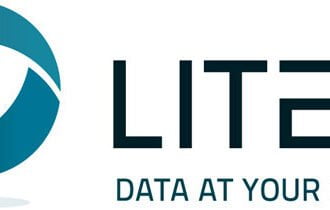Innovation and analytics often are seen as opposing concepts. Many argue that innovation –which is often glorified as a moment of genius – cannot be reduced to a set of processes. Or even worse, to a set of metrics.
Last week, I presented about this very subject with Lego CIO Henrik Amsinck at the Business Performance Conference in Florida (check out my video recap of Day 1 @ http://ow.ly/1Km98 & Day 2 @ http://ow.ly/1Kr8k).
This week, I’ll be speaking at the 2010 Palladium EMEA Summit in Madrid and will be part of a roundtable panel with Drs. Kaplan and Norton of the Balanced Scorecard to continue the conversation on the future of innovation and analytics.
There is a large body of research on innovation from the late C.K. Prahalad to Jim Carroll, Edward de Bono and others. However, few mention the importance of analytics as part of the innovation process. Our research has shown that innovative companies share these cultural traits:
Constant search for feedback. Innovative organizations don’t just tolerate experimentation; they look for opportunities to experiment, measure and learn. This process allows them to clearly …
Innovation and analytics often are seen as opposing concepts. Many argue that innovation –which is often glorified as a moment of genius – cannot be reduced to a set of processes. Or even worse, to a set of metrics.
Last week, I presented about this very subject with Lego CIO Henrik Amsinck at the Business Performance Conference in Florida (check out my video recap of Day 1 @ http://ow.ly/1Km98 & Day 2 @ http://ow.ly/1Kr8k).
This week, I’ll be speaking at the 2010 Palladium EMEA Summit in Madrid and will be part of a roundtable panel with Drs. Kaplan and Norton of the Balanced Scorecard to continue the conversation on the future of innovation and analytics.
There is a large body of research on innovation from the late C.K. Prahalad to Jim Carroll, Edward de Bono and others. However, few mention the importance of analytics as part of the innovation process. Our research has shown that innovative companies share these cultural traits:
Constant search for feedback. Innovative organizations don’t just tolerate experimentation; they look for opportunities to experiment, measure and learn. This process allows them to clearly understand the difference between correlation, causality or coincidence. A few months ago, I crossed paths with Steven Levitt, the author of Freakonomics. In his speech, he mentioned that his golf swing had only improved after he started measuring swing performance with the help of a small device. This might be a simple example but it begs the question: does your organization have a system by which it measures the detailed impact of your experimentations?
Ability to learn from greatness. Does your management team stop to understand what’s behind the things that make you great? While I won’t go as far as Alex Bogusky and suggest we stop learning from our failures, I note that, when it comes to analysis, our brains seem to be programmed to “rush to the red indicators.” I’m not arguing that you shouldn’t solve bad performance (or bad measurement), but I’d like to make the case that an organization that doesn’t know and doesn’t analyze what makes it great, will have a hard time innovating.
Clear communication on competitive strategy measurement. I had the opportunity to meet Geoffrey Moore a few months ago and discuss his point of view on innovation (one of my favorite articles of his is “Top 10 Innovation Myths.” Moore’s point is that innovation without competitive context can be dangerous. If you understand what makes your organization unique, have you communicated clearly how you measure your competitive edge to your employees and partners? This will help innovate in a way that reinforces your competitive advantage.
Readiness for innovation to come from anywhere. Innovation can come from the most unexpected places. Take the example of research officer John Szilagyi, who, by suggesting a simple change to tax returns, generated nearly $3 billion in revenues for the IRS. When he first presented this idea, the government wasn’t ready to implement it. It wasn’t until they were looking for new revenue, that they were ready to consider it. Is your organization sitting on such ideas? And is it possible that you are overlooking similar innovative approaches because they don’t relate to metrics you are not measuring yet?
If you have any feedback, I’d love to hear it! You can contact me at bruno@brunoaziza.com or ping me on twitter @brunoaziza.
Best,
Bruno Aziza
Co-author, Drive Business Performance






